BROOKLYN: 66 VIEWS OF THE STORM (1888)
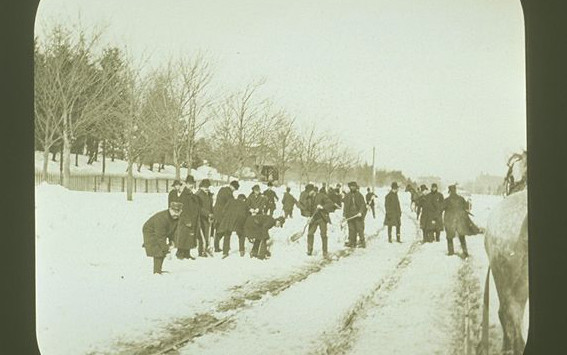
******************************************************************************************************************************** Brownstone Detectives investigates the history of our clients’ homes. The story you are about to read was composed from research conducted in the course of one of those investigations. ******************************************************************************************************************************** In 1888, Adrian Vanderveer Martense, a member of an old Brooklyn Dutch family and resident of Flatbush, snapped 66 photographs throughout the 1888 Blizzard. Those photographs are with us to this day at the Brooklyn Visual Heritage. According to the Brooklyn Historical Society, the Martense family built a homestead in Flatbush which included land that is now part of Green-Wood Cemetery. Their homestead stood for several generations until the family sold it in 1889, when Flatbush was transitioning from a farming community into an inner suburb. For Adrian Vanderveer Martense, Flatbush became a subject for his photography. He documented houses, streets, and his friends and neighbors in Flatbush, as well as the momentous Blizzard of 1888. Follow @BrownstoneDetec Share ———————————————————————————————————————– The Brownstone Detectives Brownstone Detectives is a property research agency. Our mission is to research, document, and save the histories of our clients’ historic properties. From this research, we produce our celebrated House History Books. Each book is fully cited, featuring detailed narratives and colorful graphics, and is designed to bring the history of any house to life. Contact us today to begin discovering the history of your home.
THE LOST ART OF MOVING HOUSES (1900)
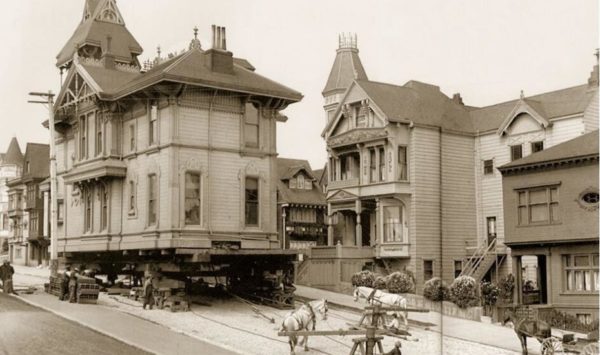
******************************************************************************************************************************** Brownstone Detectives investigates the history of our clients’ homes. The story you are about to read was composed from research conducted in the course of one of those investigations. Do you know the history of YOUR house? ******************************************************************************************************************************** An article in the 28 March 1900 edition of the Brooklyn Daily Eagle caught our eye the other day. It detailed an old practice of moving houses, and it took place in a time when the economics were such that their transport to another lot made more fiscal sense than tearing them down wholesale. In this story, however, the time it took to move this particular house took a toll on the neighboring residents. And, at one point, they gathered to tear the house down, themselves… THE HOUSE IN THE STREET The story took place in the early part of 1900 in Flatbush at the corner of Flatbush Avenue and Linden Boulevard. The subject was a frame structure that was being moved from that corner, although not quickly enough for local residents who protested the house’s temporary location on Linden Boulevard. And by “on Linden Boulevard,” we mean on the actual roadway itself. “A frame building stands in the middle of Linden boulevard, at its junction with Flatbush avenue. The building bears the sign of Vanderveer & Williamson, real estate agents,” the reporter started his story. Vanderveer & Williamson, we discovered – through combing the newspaper’s archives – were Adrian Vanderveer and Adrian N. Williamson, who had, by this point, had […]
THE WINDSOR TERRACE ASH HOLE (1903)
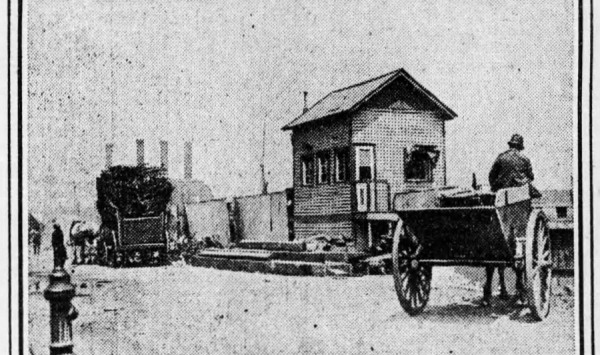
******************************************************************************************************************************** Brownstone Detectives investigates the history of our clients’ homes. The story you are about to read was composed from research conducted in the course of one of those investigations. Do you know the history of YOUR house? ******************************************************************************************************************************** Nobody likes an ash hole. It is a given fact. They’re a nuisance. They’re an eyesore. And everyone would rather they go somewhere else than stick around and continue to bother them. So, when a wealthy real estate operator and contractor, a Thomas McCann, who owned the land in Windsor Terrace where the ash hole was to go – what today comprises the backyards of Nos. 637 – 641 17th Street – determined to sell the land to an ash hole operator, all hell broke loose. For many years a dumping ground for the Street Cleaning Department and various contractors, the triangular plot of land, was now up for sale to the City. McCann, the owner, claimed the land to be quite valuable at $12,500. The City, though, thought it was really only worth less than half of that, at $5,700. The City’s real estate expert, the man who’s opinion about land might have mattered the most, and “who went over the property carefully,” thought it was worth only $1,132. The neighbors, who would have to deal with the ash hole if it moved in next door, seemed to be the only ones who really knew the value of living next to an ash hole – $500. In the end, the […]
HAS YOUR BROKER BEEN FOOLING YOU? (1905)
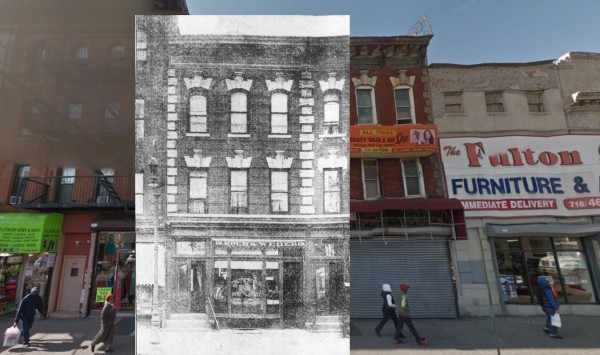
******************************************************************************************************************************** Brownstone Detectives investigates the history of our clients’ homes. The story you are about to read was composed from research conducted in the course of one of those investigations. Do you know the history of YOUR house? ******************************************************************************************************************************** In 1905, No. 838 Flatbush Avenue was only a few years old. But it was already on its third tenant. The Brooklyn Daily Eagle opened its Flatbush office at No. 838 (today, No. 834) that year, forcing Weber & Koch realtors out the door. The building had been constructed by Captain Henry Hoffman. Hoffman, referred to as captain from his sailing days, was the sole surviving member of the crew of the schooner America which had brought the America‘s Cup to the United states in 1851. In business life, Hoffman was a big man in New York society, having been a millionaire coal merchant, though, in 1905, and reputedly (according to many sources – amongst them the Daily Eagle) the wealthiest man in Flatbush at the time. Hoffman had originally expected to use the site for the real estate dealings he dabbled in. Soon after building the structure, however, Hoffman would sell and move on. The new owners would be the borough’s premiere newspaper, the Brooklyn Daily Eagle, which would maintained the office as a branch of the newspaper up until around the late 1920s. In 1918, however, part of the building was taken up by another organization. The Flatbush Chamber of Commerce established itself there. All this from an unassuming […]
TILTING AT FLATBUSH WINDMILLS (1879)
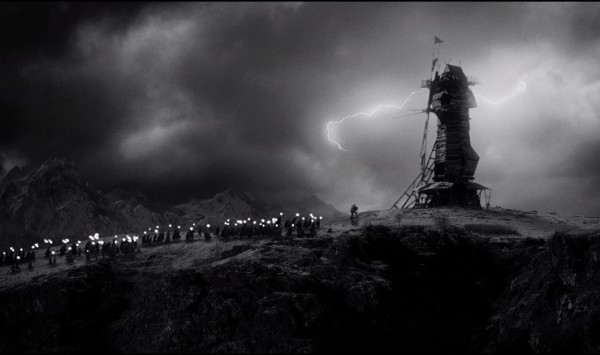
******************************************************************************************************************************** Brownstone Detectives investigates the history of our clients’ homes. The story you are about to read was composed from research conducted in the course of one of those investigations. Do you know the history of YOUR house? ******************************************************************************************************************************** It was iconic like the Williamsburg Bank building (1 Hanson Place) at Flatbush Avenue. It had stood on the same Flatbush farm for 75 years – a relic of our Dutch past and a connection to our Brooklyn roots. Most Brooklyn residents had never seen it – but everyone knew of it. It had even made such an impression on the psyche of 19th century Brooklynites that socialite Gertrude Lefferts Vanderbilt included its destruction in her book, The Social History of Flatbush. And, incredibly, it had even had a special significance to the “colored” people of New York and Brooklyn, as it was used during the Civil War draft riots of 1863 – which had spread from New York to Brooklyn – to shelter much of the city’s black population. By the late 19th century, though, it was no longer operable as a windmill. As landmarks went, however, no one could relegate the structure to any sort of second class status. It was a Brooklyn landmark through and through. But all of that changed on a single night in 1879 when, through the bottom windows, the Vanderveer windmill began to spout flames. CONFLAGRATION! The flames rose so high, filling the eastern expanse of the night’s horizon, that people in the center […]
STRAIGHTENING A CROOKED CHURCH (1904)
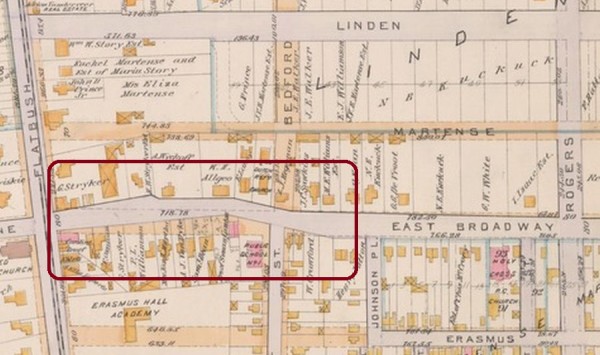
******************************************************************************************************************************** Brownstone Detectives investigates the history of our clients’ homes. The story you are about to read was composed from research conducted in the course of one of those investigations. Do you know the history of YOUR house? ******************************************************************************************************************************** “You can’t drive straight down a crooked road.” So goes the old saying which implies the difficulty of staying the course in precarious surroundings. And the saying proved to be of true portent in the center of Flatbush in 1904. BUT TO BEGIN AT THE BEGINNING… Before the Town of Flatbush was unceremoniously subsumed into the City of Brooklyn, it was still a rustic expanse of farmland, dirt roads, and farmers. When that great event happened in 1894, one of the challenges Brooklyn faced – which Brooklyn had taken on some 50 years earlier itself – was making the Flatbush roadways congruent with the rest of Brooklyn’s streets and avenues. This challenge would prove to be even more decidedly troublesome as the Department of Streets began to study the lay of the farmlines which made up the old town. Nearly all of them – in the 1600s – were set at an angle. CROOKED CHURCH One of the roadways which ran alongside several of these farms was Church Avenue. Church was named after the Flatbush Reformed Protestant Dutch Church, which sat at the corner of Church and Flatbush avenues. As Church Avenue (formerly East Broadway) passed Flatbush and moved in an easterly direction, the avenue, according to a current newspaper article, […]